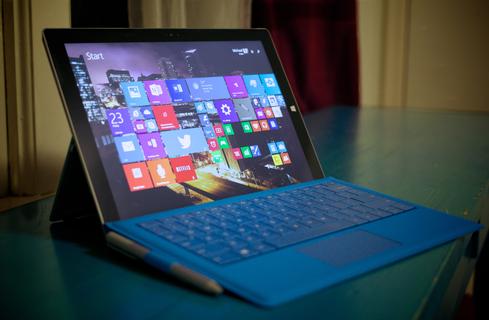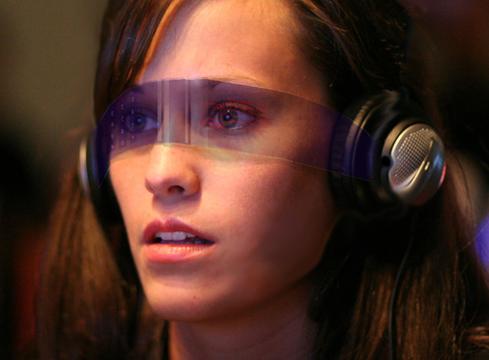Business PCs' New Era: 6 TrendsBusiness PCs' New Era: 6 Trends
Six factors are shaping the new multi-screen world of office computing.


Surface Pro 3 Vs. World: Mobile Smackdown
Surface Pro 3 Vs. World: Mobile Smackdown (Click image for larger view and slideshow.)
In our previous story on the multi-screen workplace era, we ended by mentioning an expected pickup in desktop PC purchases by businesses this year. (Desktops! Really!) Let's dig into that trend -- plus five more that are remaking business PCs.
1. Desktops keep on truckin'
Even Techaisle, the firm that conducted the research for a new report on the use of endpoint devices in business environments, raised an eyebrow at this one: "In any survey, there are surprising findings -- and in this one, the enthusiasm shown for desktop PCs qualified as a surprise." A weighted 50% of respondents indicated desktop purchase plans this year. Midsized companies, with between 100 and 1,000 employees, are especially keen on desktop PCs, with nearly 90% upgrading this year. In companies with 500 or more employees they're buying in bulk, an average of 70-plus desktops apiece.
Tommy Tablet and Sally Smartphone might ask: But, why? Techaisle speculates on a few reasons. First, existing desktops are simply getting old, too old to pass the "good enough" test in some cases. Second, many businesses still see the desktop as the ideal content creation device.
[Let's play "name that hybrid." Read Computex Rewind: 3 Takeaways For PC Users.]
Third, desktops, by their relatively bulky nature, are treated more rigidly as part of long-term budget and purchasing plans -- not unlike servers and other on-premises infrastructure -- and we're now hitting a natural upswing in the buying cycle. "Desktop acquisitions are more likely to appear in formal purchase plans than mobile units, and less likely to be acquired on an ad-hoc basis," the report reads.
2. Longer refresh cycles
Alas, it's not necessarily a gravy train for PC makers. Those refresh cycles are growing longer, especially for desktops, according to Techaisle analyst Anurag Agrawal. "[The PC], which is the basic and most important device for any business, has gone through innovation in terms of look, feel, and utility, and unless the performance really starts to affect employee productivity and experiences security vulnerabilities, businesses shy away from making huge capital investments," Agrawal said. "The new normal is a four-year refresh cycle in most countries.
That means a refresh cycle that is double, give or take, what might have been considered normal in the pre-mobile era.
3. "Good enough" computing: Long live XP!
As long as we're on the topic of wringing every last dollar out of those technology investments, let's consider the recently "retired" Windows XP. Plenty of businesses still use it. XP was, in a sense, far too successful for its own good, or at least Microsoft's own good. Some 43% of mid-market firms included in Techaisle's research, for example, said they'll use Windows XP for the foreseeable future, even though the OS hit its support cutoff in April. Agrawal said the arrival of XP ushered in the age of "good enough computing." As long as a PC was performing "good enough" for the average desk jockey to get her job done, there was simply no reason to upgrade, a new phenomenon at the time.
Figure 1:  What will IT do when the PCs it needs to support
What will IT do when the PCs it needs to support
extend to wearables?
(Source: Wikipedia)
"Microsoft attempted to drive additional demand by introducing Vista, but in reality, most users found XP adequate for their needs and the needs of the software they were using -- and since most users require only a small fraction of the features included with any application, new releases of stalwarts like Microsoft Office failed to ignite any additional demand," Agrawal noted.
Windows 8.1 has yet to ignite that demand. Although many of the companies still running XP would like to get off it, they run into budget, time, application compatibility, and other problems, said Agrawal. And Windows 8.x hasn't done much to motivate them up the mountain -- three in four respondents said Windows 8.x was a non-factor in their upgrade strategies.
4. The Google factor
Although operating system and hardware fragmentation has been a fact of mobile life, it wasn't always so with the PC, "PC" being a term that typically referred to Windows-based machines running on Intel processors. And in businesses, the PC was the thing. Now, Macs increasingly appear in
corporate offices and Google's Chrome and Android-based models appear from Windows hardware partners like Dell and HP. Techaisle sees an opportunity for Chromebooks and Android-based PCs somewhere in the middle of the content consumption-interaction-creation spectrum, although Agrawal throws his hands up when asked to predict their impact on business purchasing decisions.
"There are analyst firms that have predicted the Chromebook market to reach anywhere from 6 million to 11 million [units sold annually] by 2016. That is a wide range," he said. Even at the high end, 11 million units would only represent around 4% of global PC shipments, Agrawal added, and there are a lot of factors that will push the needle between passing fad and business-ready device. Among them: What if Microsoft launched a "Bing-book"? What if Chromebooks become IT favorites as thin clients in virtualized environments? What if Android-based PCs win over the budget-conscious set? And how will Chromebooks evolve from the "cheap-and-simple" proposition they launched with?
5. More choices, tougher decisions
There's more choice than ever in the PC market, from "traditional" desktops and laptops, to two-in-ones or hybrids, to dumping the laptop altogether for an iPad or other tablet. That's a plus for buyers willing to do their homework. It might be less so for the vendors because buyers' purchasing decisions take longer, especially if the buyer has no brand loyalty.
"[The] massive increase in choices for IT [and] business buyers is a good thing, something for everyone, but also creates a longer purchase cycle unless a buyer is already committed to a PC OEM," Agrawal said. "If a buyer is committed to a PC OEM then the decision is made based on price, configuration, account management, and associated services."
6. More screens, more IT challenges
A recent Spiceworks survey found more than two-thirds of IT pros support at least two devices per employee in their organizations, and nearly as many expect that device-per-person ratio to grow in the next five years, thanks in part to wearables and the Internet of Things.
There's a price to pay for the multi-screen norm most workers already take for granted -- and we're not talking about the cost of the devices themselves, nor the software or data plans that make them work. Rather, someone has to fix them when they break, not to mention answer the always-fun question: "So, can I get [X application] on [X device]?"
We know -- BYOD and all of that. But let's see a show of hands in the comments from IT pros who have fielded calls from co-workers about their personally owned iPads or Android phones. What happens when wearable tech or IoT goes mainstream?
Too many companies treat digital and mobile strategies as pet projects. Here are four ideas to shake up your company. Also in the Digital Disruption issue of information: Six enduring truths about selecting enterprise software. (Free registration required.)
About the Author
You May Also Like






